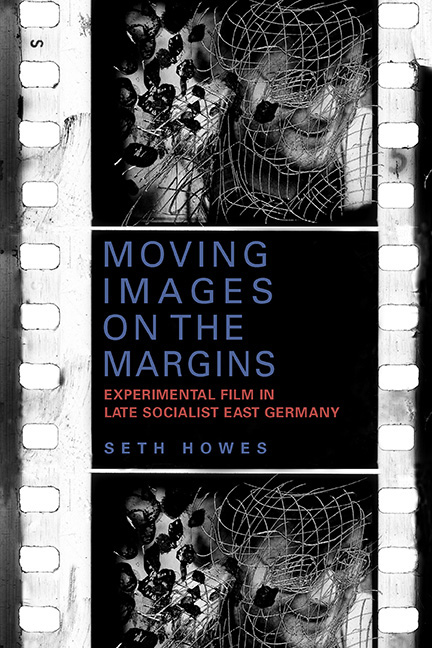Book contents
- Frontmatter
- Dedication
- Contents
- List of Illustrations
- Acknowledgments
- Introduction
- 1 Art, Experimentation, and the Avant-Garde in East Germany
- 2 Heraklesmaschine: Lutz Dammbeck's Experimental Cinema and the Expropriation of the Senses
- 3 Lines of Communication: Mail Art and the Connectivity of Experimental Film
- 4 Herz Horn Haut Schrein: Film and the Autoperforating Body of/at Work
- 5 Film Experiments, Design Anthropology, and the Politics of Vision: Yana Milev's Theory of Practice
- Conclusion: Images of Moving Margins
- Notes
- Bibliography
- Index
1 - Art, Experimentation, and the Avant-Garde in East Germany
Published online by Cambridge University Press: 21 March 2020
- Frontmatter
- Dedication
- Contents
- List of Illustrations
- Acknowledgments
- Introduction
- 1 Art, Experimentation, and the Avant-Garde in East Germany
- 2 Heraklesmaschine: Lutz Dammbeck's Experimental Cinema and the Expropriation of the Senses
- 3 Lines of Communication: Mail Art and the Connectivity of Experimental Film
- 4 Herz Horn Haut Schrein: Film and the Autoperforating Body of/at Work
- 5 Film Experiments, Design Anthropology, and the Politics of Vision: Yana Milev's Theory of Practice
- Conclusion: Images of Moving Margins
- Notes
- Bibliography
- Index
Summary
Introduction: Culture, Politics, and Cultural Politics
WITH ALL DECISIONS about East German public affairs resting ultimately with the ruling Socialist Unity Party of Germany (SED), the GDR was a party dictatorship whose institutions and governmental structures were explicitly modeled on those of the Soviet Union. But though it was a ‘dictatorship and a one-party state,’ Peter Caldwell reminds us in his intellectual history of GDR economics, philosophy, and politics, it was ‘nonetheless subject to the tension between rule and freedom that marked political discussion during the nineteenth and twentieth centuries in Europe and the world.’ This tension rarely made itself explicitly known in Neues Deutschland, the SED's famously cheerful party organ, whose coverage of politics favored announcing recent achievements, projecting future success, and denouncing imperialist enormities. And the Volkskammer, the GDR's nominal legislature, did not provide a venue for discussions of policy priorities that were both open-ended (that is, encompassing contrary views and a range of potential outcomes) and binding; those were left to the Politbüro, the small body of high-ranking SED officials whose deliberations saw publication only as polished, ornamental pronouncements.
But Neues Deutschland's optimistic cant and the Volkskammer's univocality– which both persisted until October 1989–did not mean that no debates about public affairs, about the rights and responsibilities of the state vis-a-vis the individual, ever took place in the GDR. It merely meant that they took place elsewhere–in individual workplaces and schools, in regional and municipal offices of government and industry, and in the cultural arena. The great social responsibility ascribed to art and literature by the GDR's political leadership–an ascription that remained constant, in word and deed, throughout the forty-year history of East Germany– meant that artists and art institutions were both assigned a privileged status within the society at large, and carefully scrutinized for their adherence to aesthetic norms that were outlined by high-ranking cultural functionaries, and then enacted and debated by critics and artists alike.
Even if SED functionaries’ power in these debates was often greater than that of artists themselves, it was nevertheless far from total; and genuinely adversarial, open debates–such as the one about Picasso in the pages of Bildende Kunst in the mid-1950s, the one about Brecht's style in Sinn und Form in the late 1960s, or the one about the formal and political character of modern art in the mid-1960s–did occur.
- Type
- Chapter
- Information
- Moving Images on the MarginsExperimental Film in Late Socialist East Germany, pp. 14 - 35Publisher: Boydell & BrewerPrint publication year: 2019

